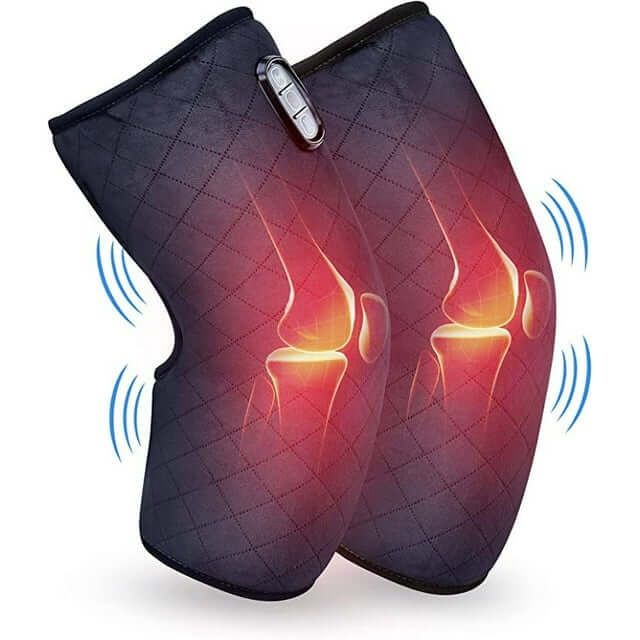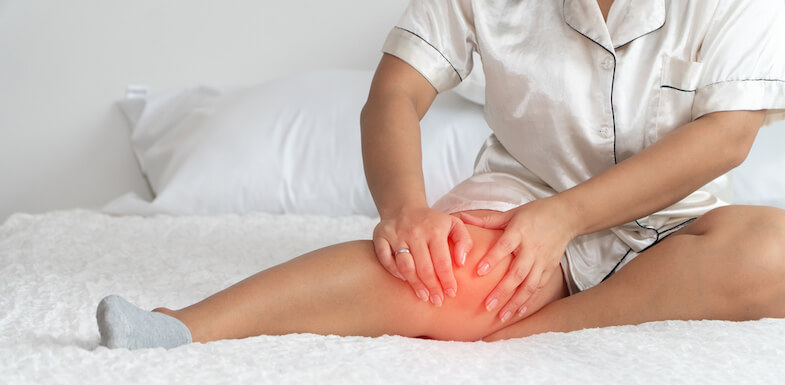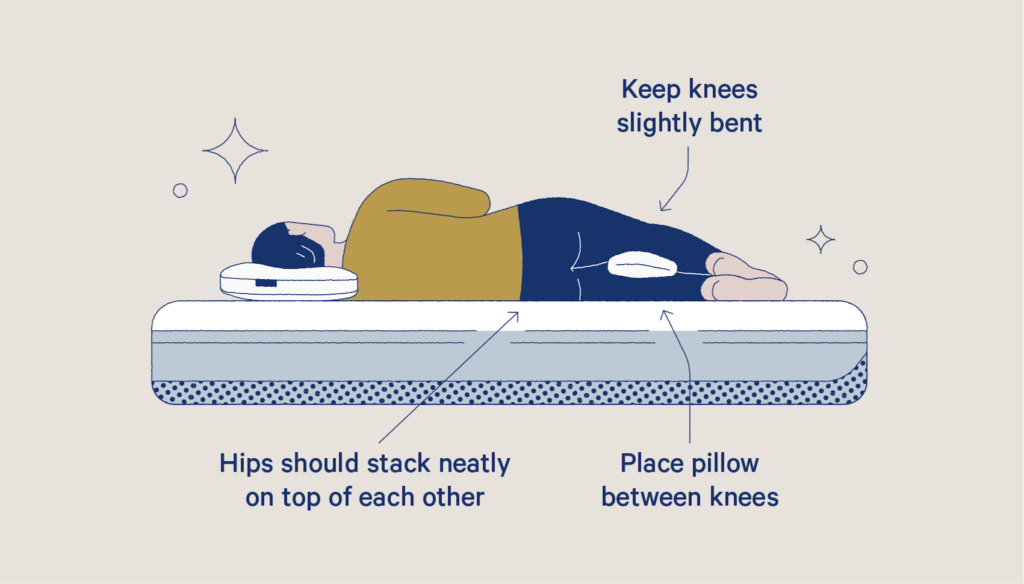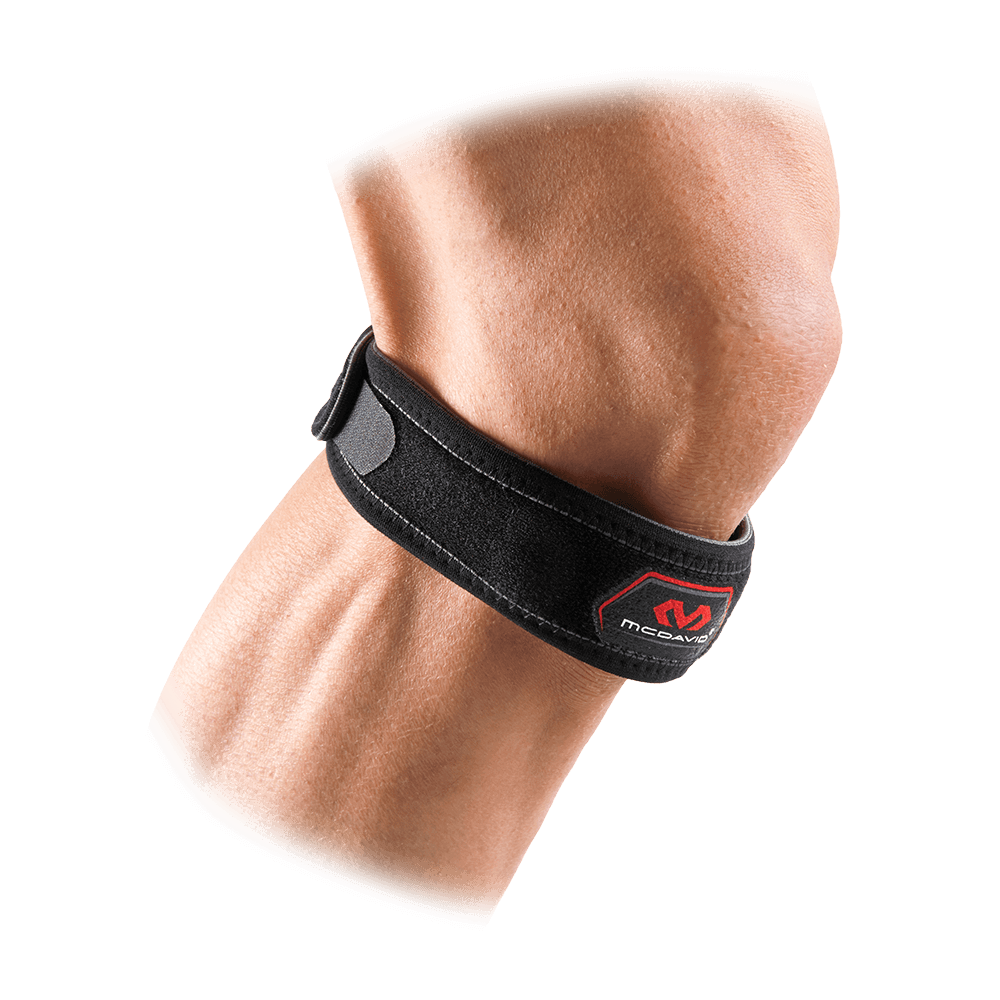Basketball is a high-impact sport that demands a lot from your knees. While it’s an excellent way to stay in shape and have fun, it can also lead to various types of injuries, including outside knee pain. This type of discomfort can be frustrating, but with the right knowledge and approach, you can identify the underlying causes and take steps to alleviate the pain. In this article, we’ll explore four common causes of outside knee pain after playing basketball and provide effective strategies for addressing each one.
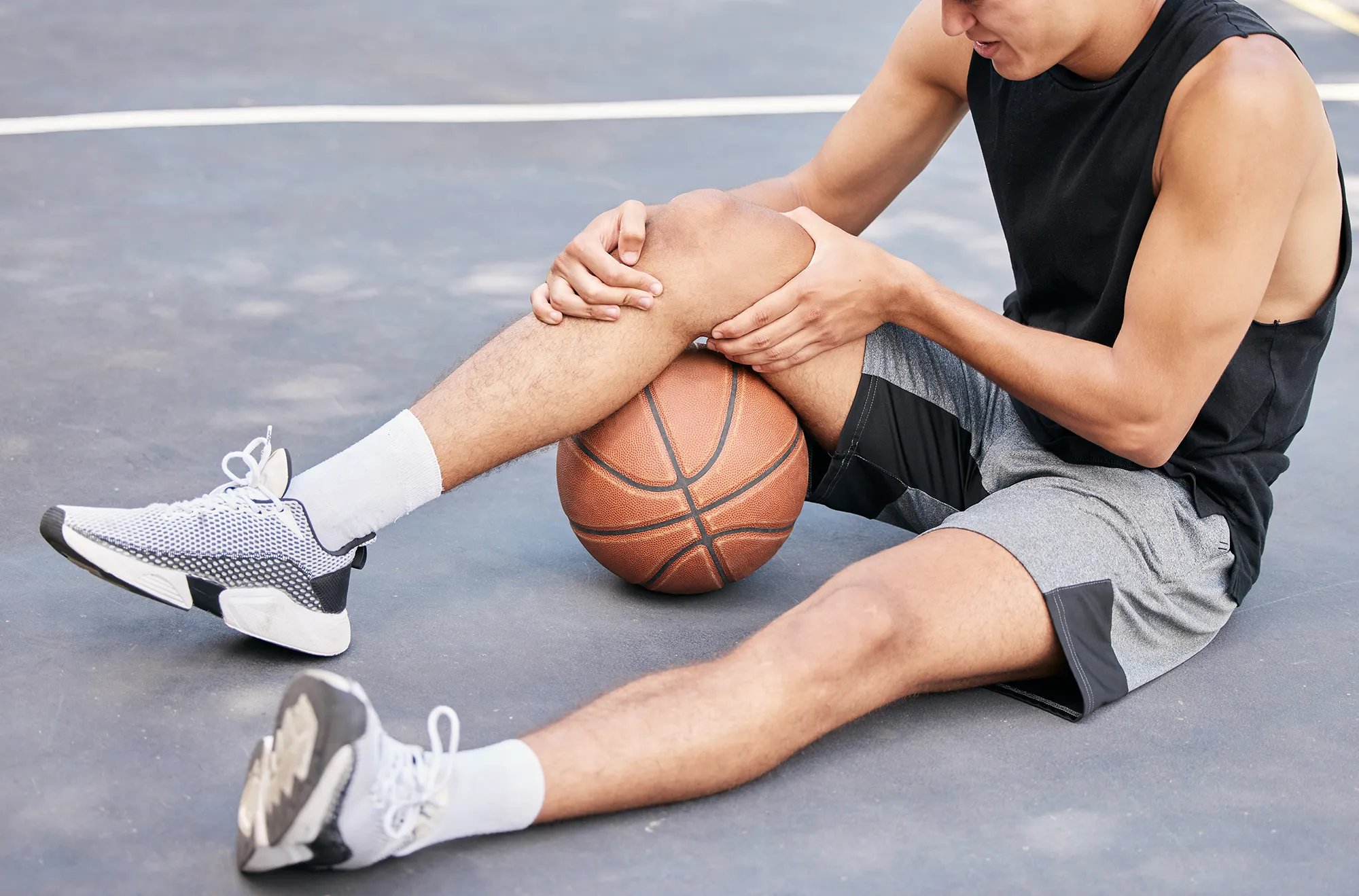
Iliotibial Band Syndrome (ITBS): An In-Depth Look
Iliotibial Band Syndrome (ITBS) is a common condition that causes outside knee pain, particularly in athletes engaged in activities that involve repetitive knee flexion and extension, such as basketball. To better understand ITBS, it’s essential to delve into the anatomy, causes, symptoms, and effective management of this condition.
Anatomy of the Iliotibial Band:
The iliotibial band (IT band) is a thick, fibrous band of connective tissue that runs along the outside of the thigh, from the hip down to the shin, crossing the knee joint. It plays a crucial role in stabilizing the knee during movement, particularly during activities like running, cycling, and, of course, basketball.
Causes of ITBS:
ITBS typically results from the repetitive motion of the knee during activities that involve flexion and extension. In basketball, this can occur during quick directional changes, pivoting, and running up and down the court. The exact cause of ITBS may vary from person to person, but some common contributing factors include:
- Overuse: Engaging in high-impact activities without proper rest and recovery can lead to ITBS. Basketball players who overtrain or suddenly increase their training intensity are at a higher risk.
- Muscle Imbalances: Weakness in the hip muscles, particularly the hip abductors and gluteus medius, can lead to altered biomechanics, causing the IT band to rub against the lateral femoral condyle.
- Poor Footwear: Inadequate footwear with insufficient arch support and cushioning can exacerbate ITBS by affecting the alignment of the lower extremities.
- Biomechanical Issues: Individual factors such as leg length discrepancies, overpronation, or supination of the feet, and hip misalignment can increase the risk of ITBS.
Symptoms of ITBS:
Recognizing the signs of ITBS is crucial in early diagnosis and effective management. Common symptoms include:
- Sharp, burning pain on the outside of the knee.
- Pain that worsens with activity, especially during running, cutting, or descending stairs.
- Swelling or inflammation along the outside of the knee.
- A snapping sensation or sound as the IT band moves over the lateral femoral condyle.
How to Fix ITBS:
Addressing ITBS requires a multifaceted approach that combines rest, rehabilitation, and lifestyle adjustments. Here are some key strategies for managing ITBS:
- Rest: Give your knee a break from high-impact activities, including basketball, to allow the inflammation to subside. In some cases, temporary cessation of activities might be necessary.
- Stretching: Regularly stretch the IT band and use a foam roller to improve flexibility and reduce tension. Focus on stretching the hip abductors and quadriceps as well.
- Strength Training: Strengthen the muscles around the hip and knee, particularly the gluteus medius and quadriceps, to provide better support and stability.
- Proper Footwear: Invest in well-fitting shoes with good arch support and cushioning to maintain proper lower limb alignment.
- Physical Therapy: Consult with a physical therapist who can guide you through a tailored rehabilitation program to address muscle imbalances and improve biomechanics.
- Gait Analysis: A professional gait analysis can identify any abnormalities in your running or movement patterns and help in making necessary adjustments.
- Orthotics: Custom orthotic insoles can be prescribed to correct any overpronation or supination issues in your feet.
- Gradual Return: When resuming basketball, ensure a gradual return with proper warm-ups and cooldowns. Focus on form and movement quality to prevent a recurrence.
In conclusion, Iliotibial Band Syndrome (ITBS) is a challenging condition that can disrupt your basketball activities. By understanding its causes, recognizing its symptoms, and following the right strategies for management and prevention, you can alleviate pain and continue to enjoy the game you love while minimizing the risk of outside knee pain. Consulting a healthcare professional is advisable for proper diagnosis and tailored treatment.
Patellar Tendinitis (Jumper’s Knee): A Comprehensive Overview
Patellar tendinitis, commonly referred to as Jumper’s Knee, is a prevalent condition among athletes, including basketball players. This condition primarily affects the patellar tendon, which connects the kneecap (patella) to the shin bone (tibia). To gain a deeper understanding of Patellar Tendinitis, it’s essential to explore its causes, symptoms, and effective methods of management.
Anatomy of the Patellar Tendon:
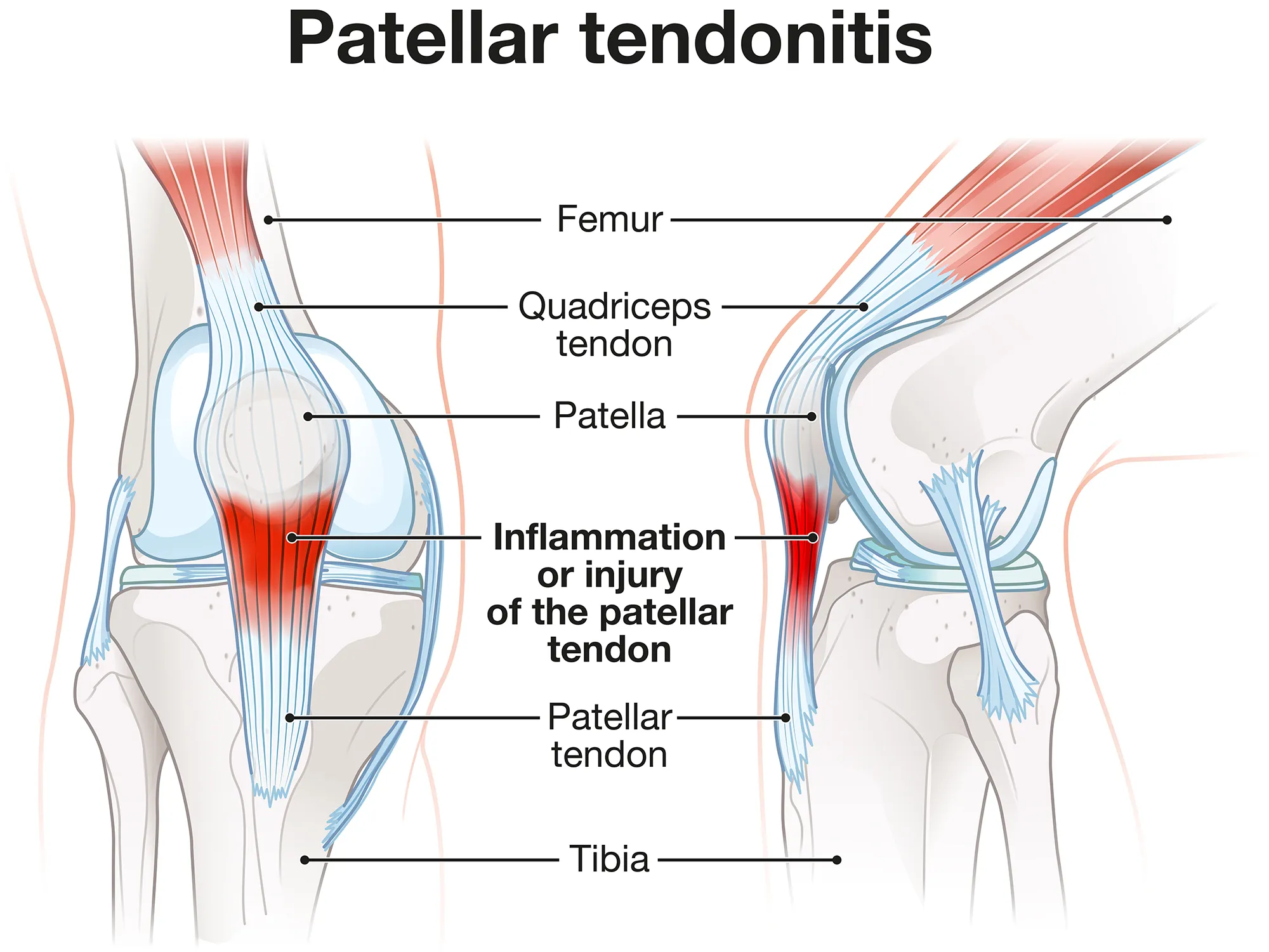
The patellar tendon is a crucial structure for knee function. It plays a vital role in the extension of the knee joint, allowing you to straighten your leg. The patellar tendon is subjected to significant stress during activities that involve jumping and explosive movements, making it susceptible to injury in sports like basketball.
Causes of Patellar Tendinitis:
Patellar Tendinitis often results from repetitive and excessive strain on the patellar tendon, which occurs in various situations for basketball players, including:
- Overuse: Intense training, frequent jumping, and abrupt changes in direction in basketball can strain the patellar tendon, leading to inflammation and injury.
- Muscle Imbalances: Weakness or imbalances in the quadriceps and hamstring muscles can contribute to abnormal load distribution on the patellar tendon.
- Biomechanical Factors: Factors like foot overpronation, leg length discrepancies, or altered knee alignment can increase the risk of developing Patellar Tendinitis.
- Poor Jumping Technique: Inefficient jumping and landing mechanics, including poor landing positions or excessive force upon landing, can place additional stress on the patellar tendon.
Symptoms of Patellar Tendinitis:
Recognizing the symptoms of Patellar Tendinitis is crucial in managing the condition effectively. Common symptoms include:
- Pain just below the kneecap, often described as a deep, aching pain.
- Pain that worsens with activity, especially during jumping, running, or squatting.
- Stiffness in the knee, particularly in the morning or after periods of inactivity.
- Swelling and tenderness around the patellar tendon.
How to Fix Patellar Tendinitis:
Managing Patellar Tendinitis requires a systematic approach that combines rest, rehabilitation, and lifestyle modifications. Here are key strategies for addressing this condition:
- RICE Therapy: Rest, Ice, Compression, and Elevation can help reduce pain and swelling in the affected area. Temporary cessation of high-impact activities may be necessary.
- Physical Therapy: Consult a physical therapist for a tailored rehabilitation program that includes exercises to strengthen the quadriceps, hamstrings, and the entire kinetic chain.
- Supportive Bracing: Consider wearing a knee brace to provide additional support and relieve pressure on the patellar tendon during games and practices.
- Gradual Return: When resuming basketball, ensure a gradual return with proper warm-ups and cooldowns. Pay attention to jumping and landing techniques to reduce stress on the patellar tendon.
- Biomechanical Assessment: Have your biomechanics assessed by a professional to address any factors that may contribute to Patellar Tendinitis, such as foot overpronation or leg length discrepancies.
- Orthotics: Custom orthotic insoles can be prescribed to correct foot alignment and reduce excessive stress on the patellar tendon.
- Anti-Inflammatory Medications: In some cases, non-steroidal anti-inflammatory drugs (NSAIDs) may be recommended to alleviate pain and inflammation, but these should be used under medical guidance.
- Platelet-Rich Plasma (PRP) Therapy: PRP injections have shown promise in promoting tendon healing and reducing pain in cases of severe Patellar Tendinitis.
In conclusion, Patellar Tendinitis, or Jumper’s Knee, is a challenging condition that can hamper a basketball player’s performance. Understanding its causes, recognizing its symptoms, and implementing the right strategies for management and prevention can help alleviate pain and enable you to continue enjoying the sport you love. If symptoms persist or worsen, consulting a healthcare professional is crucial for proper diagnosis and treatment.
Meniscus Tears: A Comprehensive Overview
Meniscus tears are common knee injuries that can affect basketball players, leading to localized pain on the outside of the knee. The meniscus is a wedge-shaped cartilage located between the thighbone (femur) and shinbone (tibia). In the context of basketball, sudden twisting, pivoting, or impact injuries can cause these tears. To better understand meniscus tears, it’s essential to explore the anatomy, causes, symptoms, and effective methods of management.
Anatomy of the Meniscus:
Each knee has two menisci, one on the inside (medial) and one on the outside (lateral) of the joint. These C-shaped cartilages serve as shock absorbers and stabilizers for the knee, helping to distribute weight and reduce friction during movement.
Causes of Meniscus Tears:
In basketball, several factors can contribute to meniscus tears, including:
- Sudden Movements: Quick changes in direction, pivoting, or abrupt stops can lead to twisting forces on the knee, potentially causing a tear.
- Direct Trauma: Collisions or impacts on the knee can damage the meniscus.
- Overuse: Chronic, repetitive stress on the knee, common in basketball due to jumping and running, can lead to wear and tear that may result in a tear over time.
Symptoms of Meniscus Tears:
Recognizing the symptoms of a meniscus tear is crucial for proper diagnosis and management. Common symptoms include:
- Pain on the outside of the knee, especially when twisting or squatting.
- Swelling and inflammation in the knee joint.
- Locking or catching sensation in the knee during movement.
- Limited range of motion, with difficulty fully extending or bending the knee.
- A feeling of instability or the knee giving way.
How to Fix Meniscus Tears:
Managing meniscus tears involves a combination of conservative treatments and, in some cases, surgical intervention. Here are key strategies for addressing this condition:
- Medical Evaluation: Consult a healthcare professional to diagnose the extent and location of the tear. They may use imaging techniques like MRI to confirm the diagnosis.
- Rest and Ice: Initially, rest the knee and apply ice to reduce pain and swelling. Crutches may be necessary to offload weight from the affected knee.
- Physical Therapy: Physical therapy can help restore knee strength and range of motion. Therapists will guide you through exercises designed to support the healing process.
- Arthroscopic Surgery: In cases of severe meniscus tears, surgery may be necessary. Arthroscopic procedures can either repair the torn meniscus or trim damaged portions, depending on the tear’s location and size.
- Supportive Bracing: Wearing a knee brace can provide stability and support to the knee while it heals.
- Gradual Return: When returning to basketball, ensure a gradual comeback with proper warm-ups and cooldowns. Focus on strengthening the knee and surrounding muscles to reduce the risk of re-injury.
- Orthotic Support: Custom orthotic insoles can be used to correct any gait abnormalities or alignment issues that may contribute to meniscus tears.
- Anti-Inflammatory Medications: Your healthcare provider may prescribe non-steroidal anti-inflammatory drugs (NSAIDs) to alleviate pain and reduce inflammation. These should be used as directed.
In conclusion, meniscus tears are injuries that can significantly impact a basketball player’s performance. Understanding the causes, recognizing the symptoms, and implementing the right strategies for management and prevention are essential for pain relief and a safe return to the sport. In cases of persistent or severe symptoms, consultation with a healthcare professional is crucial for proper diagnosis and guidance on the most appropriate treatment approach.
Iliotibial Band Friction Syndrome: An In-Depth Exploration
Iliotibial Band Friction Syndrome, often referred to as ITBFS or IT Band Syndrome, is a condition that can cause outside knee pain and discomfort in athletes, including basketball players. To gain a comprehensive understanding of this syndrome, it’s essential to delve into its anatomy, causes, symptoms, and effective methods of management.
Anatomy of the Iliotibial Band (IT Band):

The iliotibial band (IT band) is a thick, fibrous band of connective tissue that runs along the outside of the thigh. It extends from the hip down to the shin, crossing the knee joint. The IT band plays a crucial role in stabilizing the knee during movement, especially in activities that involve repetitive bending and straightening of the knee, such as basketball.
Causes of Iliotibial Band Friction Syndrome:
Iliotibial Band Friction Syndrome typically occurs due to friction between the IT band and the outer edge of the femur (thigh bone). Basketball players are prone to this condition for several reasons, including:
- Overuse: Engaging in activities that involve repetitive knee flexion and extension, which is common in basketball, can lead to irritation and inflammation of the IT band.
- Biomechanical Factors: Individual factors, such as leg length discrepancies, foot overpronation, or hip misalignment, can contribute to improper lower limb alignment, increasing the risk of ITBFS.
- Gait Abnormalities: Poor running or biomechanical form, especially during rapid direction changes and pivoting movements in basketball, can lead to excessive friction.
- Training Errors: Sudden increases in training intensity or inadequate recovery can place undue stress on the IT band, leading to irritation.
Symptoms of Iliotibial Band Friction Syndrome:
Recognizing the symptoms of ITBFS is crucial for early diagnosis and effective management. Common symptoms include:
- Sharp, stabbing pain on the outside of the knee, particularly during activities like running, cutting, and descending stairs.
- A snapping or popping sensation or sound when the IT band moves over the lateral femoral condyle.
- Swelling and tenderness along the outside of the knee.
- Pain that worsens with continued activity and often eases with rest.
How to Fix Iliotibial Band Friction Syndrome:
Addressing Iliotibial Band Friction Syndrome requires a multifaceted approach that combines rest, rehabilitation, and lifestyle adjustments. Here are key strategies for managing this condition:
- Rest: Initially, give your knee a break from high-impact activities, including basketball, to allow inflammation to subside. Avoid activities that exacerbate pain.
- Gait Analysis: Consult a specialist to analyze your running or movement patterns and make necessary adjustments to your form.
- Orthotics: Custom orthotic insoles can help correct overpronation and support proper lower limb alignment.
- Stretching and Strengthening: Regularly stretch the IT band and work on strengthening the hip muscles, especially the hip abductors and gluteus medius.
- Gradual Return: When resuming basketball, ensure a gradual return to play. Focus on form and movement quality, and pay attention to signs of discomfort.
- Anti-Inflammatory Medications: Non-steroidal anti-inflammatory drugs (NSAIDs) may be used to alleviate pain and reduce inflammation under medical guidance.
- Physical Therapy: Consult a physical therapist for a tailored rehabilitation program designed to address muscle imbalances and improve biomechanics.
In conclusion, Iliotibial Band Friction Syndrome is a challenging condition that can disrupt a basketball player’s performance. By understanding its causes, recognizing its symptoms, and following the right strategies for management and prevention, you can alleviate pain and continue enjoying the sport you love while minimizing the risk of outside knee discomfort. In cases of persistent or severe symptoms, consulting a healthcare professional is essential for proper diagnosis and personalized treatment.
Summary:
Basketball is an exhilarating sport, but it can take a toll on your knees, leading to various types of injuries and discomfort, especially outside knee pain. In this comprehensive article, we’ve explored four common causes of outside knee pain in basketball players and provided effective strategies for addressing each one. Let’s summarize the key points:
- Iliotibial Band Syndrome (ITBS):
- ITBS is a common cause of outside knee pain, resulting from friction between the IT band and the knee.
- Strategies for managing ITBS include rest, stretching, strength training, and proper footwear.
- Patellar Tendinitis (Jumper’s Knee):
- Patellar tendinitis, also known as Jumper’s Knee, occurs due to overuse of the patellar tendon.
- Management involves rest, physical therapy, supportive braces, gradual return to activity, and addressing any biomechanical issues.
- Meniscus Tears:
- Meniscus tears can result from sudden twisting or pivoting movements during basketball.
- Solutions include medical evaluation, physical therapy, arthroscopic surgery (if needed), supportive bracing, and a gradual return to play.
- Iliotibial Band Friction Syndrome:
- IT Band Syndrome is caused by friction between the IT band and the lateral femoral condyle.
- Effective management entails rest, gait analysis, orthotic support, stretching, strengthening, and a gradual return to basketball.
In conclusion, outside knee pain after basketball can be attributed to these common causes, each requiring its unique approach to management and prevention. Identifying the underlying cause, recognizing symptoms, and implementing the appropriate strategies can help alleviate pain and ensure a safe return to the sport. Always consult a healthcare professional for proper diagnosis and personalized treatment plans, as they can provide guidance tailored to your specific condition. With the right care and precautions, you can continue to enjoy playing basketball while minimizing the risk of outside knee discomfort.

